This 3D metal printing plant manufactures titanium and aluminium components in Bremen
Digital/Industry 4.0Materialise GmbH site at BITZ, Bremen's Innovation and Technology Centre
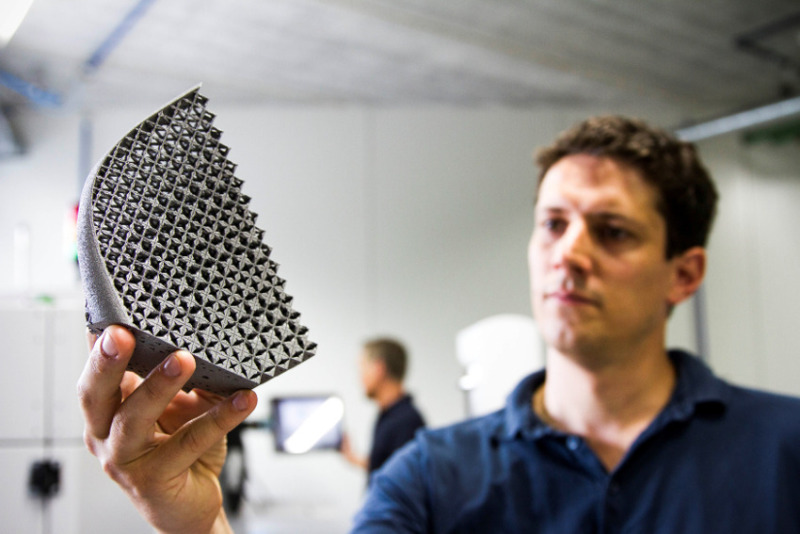
Wilfried Vancraen, CEO of the Belgian corporation Materialise NV, began his success story around 25 years ago in Bremen when, as a young graduate, he became involved with BIBA, the Bremen Institute for Production and Logistics. It was here that he saw the first 3D printer in Europe. He was excited by the new possibilities it presented, and immediately recognised the technology's potential. And so, back in his home country of Belgium, he founded Materialise – a company that today is one of the leading providers of 3D printing services worldwide, with more than 1,300 employees and an annual turnover of €100 million.
A quarter of a century later, the story has come full circle, and Bremen has once again become a playground for innovation in 3D printing. And Vancraen back on the scene, attending the opening of the Materialise metal printing plant at the Bremen Innovation and Technology Centre (BITZ) in mid-2016. What makes the plant so remarkable is its ability to manufacture workpieces in titanium and aluminium, as well as prototypes of industrial production quality. Although metal printing is already commonly used in medicine – in the manufacturing of dental implants, for example – when it comes to the industrial sector, the technology is still in its infancy. But as it grows, so too does Materialise and its German subsidiary, Materialise GmbH.
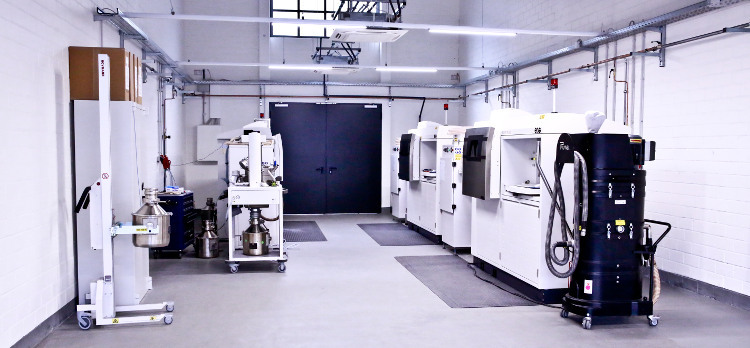
3D Printing: from mid-sized suppliers to aerospace giants
BITZ is the incubator that has helped many technology companies to hatch their fledgling concepts. Materialise has rented three halls at its site next to the University of Bremen, which contain a total of four 3D metal printers: three for the aluminium alloy AlSi10Mg and one for the titanium alloy TiAl6V4. These alloys are frequently used in various industries – in aerospace, for example, or in automotive or mechanical engineering. Naturally, these industries also comprise Materialise GmbH’s target audience. "The technology can be employed by any company that manufactures complex components. Many of our clients are companies in the supply industry," says Dr Ingo Uckelmann, technical manager of 3D printing at Materialise. Like Vancraen, Uckelmann came across 3D printing as a student in Bremen and has been captivated by it ever since. "I’m fascinated by the freedom in what you can create," explains the engineer.
Fine powder and a strong laser: how 3D printing works
3D printing offers a certain freedom – namely, the ability to shape metal into any form you can imagine, free from the restrictions of conventional tools and processing technologies. Experts also refer to the process as additive manufacturing (AM), as the printed component is formed layer by layer, using a laser to smelt each layer out of fine metal powder. A machine on a carrier plate gradually applies layers of powder that are 25 to 50 micrometres thick, as thin as a strand of hair. The laser fuses the material only in places where the component needs to be formed, in a process known as laser sintering.
After many thousands of layers have been applied, the completed component can be removed from the powder. The machines in Bremen can produce components as large as a shoebox, with an edge length of up to 25cm. They can also be used to modify the insides of workpieces, creating objects such as hollow spheres in the course of a single operation. "Using traditional methods, this would be impossible without some very costly intermediate steps," explains Uckelmann. Companies such as Airbus have pricked up their ears at news of the technology’s capabilities, as it opens up entirely new worlds in the realm of lightweight construction. The aerospace corporation has already tested 3D-printed metal components in flight operations and is one of Materialise's clients.
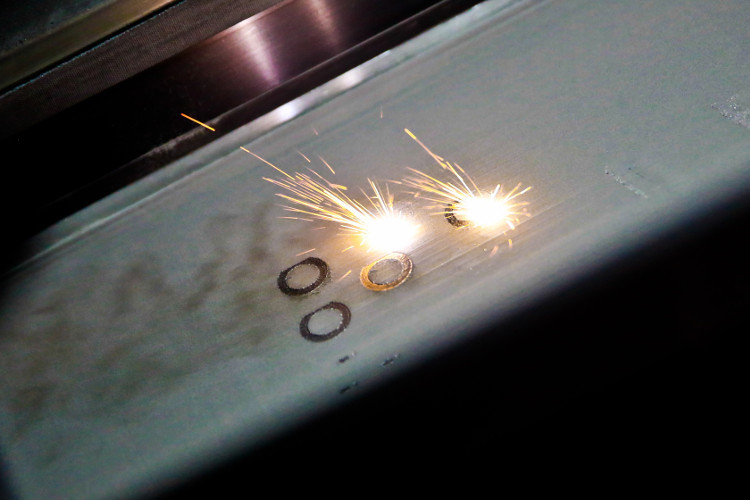
Unique, multifunctional, easy and quick: the competitive advantages of 3D printing
3D printers are not set to replace CNC milling machines or lathes – rather, the technology is of interest to design engineers looking to consolidate several steps into a single process. At present, an aluminium sheet is poured, rolled, punched, perforated and riveted to other sheets to form a component; in future, the 3D printer will be able to instantly manufacture a complete assembly. This opens up new possibilities for more efficient production. Another application of the technology lies in the production of spare parts. As long as the blueprints still exist, new parts can be printed at relatively low cost. It's an exciting prospect – not least for classic car enthusiasts. Crucially for the industrial sector, Materialise is striving towards certification in accordance with quality standards such as ISO 9000 or EN9100. Once this is achieved, there is nothing to stand in the way of industrial series production.
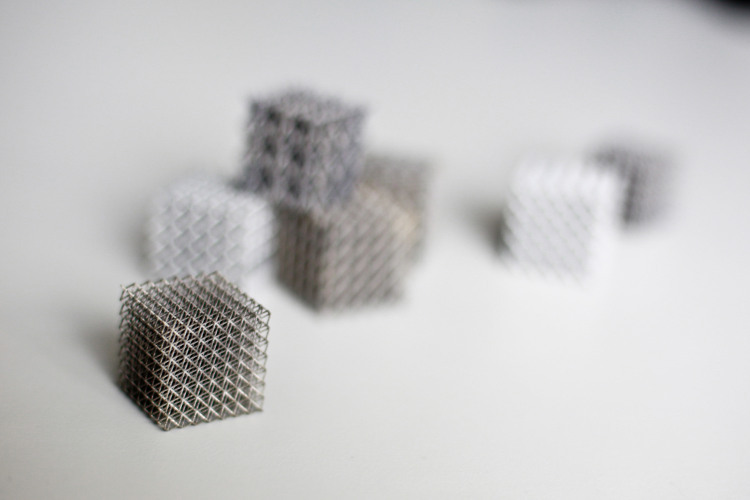
Re-learning how to design: engineers head back to school
When it comes to using 3D printing economically for production purposes, creativity is an absolute must. "People looking to produce the same things they’ve always done, but with 3D printing, are going the wrong way about it," Uckelmann advises. Companies should check to see if they can consolidate the process of creating a component that up to now has been produced in numerous individual steps. It's also particularly useful to bear 3D printing in mind when developing completely new products. "Designers have to learn to think in a new way," adds the technical manager. "This presents a challenge for the entire business process." Materialise thus offers courses and workshops that demonstrate the new possibilities and help others to get to grips with the technology, and its engineers are helping to optimise models in the fields of construction and design. The company sees itself as a complete service provider, from the very first points of contact in 3D printing to the delivery of turnkey systems or components in series production. Bremen plays a key role in additive manufacturing.
Whenever Materialise’s CEO speaks of Bremen, you can see his face light up with fond memories of the city. But Vancraen did not chose Bremen to be the site of the metal printing plant out of sheer sentimentality – there are plenty of other good reasons for doing so. "Bremen has a unique ecosystem for 3D printing that encompasses research, development and application. This gives us opportunities for collaboration and many new sources of inspiration. And the universities and colleges attract many young, well-educated individuals, which is fantastic," he explains.
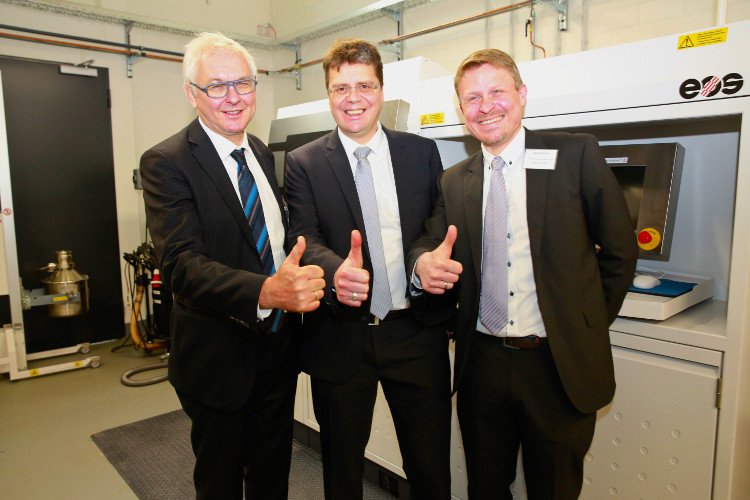
Another good reason comes in the form of Marcus Joppe, the managing director of the group's German subsidiary Materialise GmbH. Like Vancraen and Uckelmann, Joppe came across 3D printing at BIBA as a student in the 90s, and just like them, he too has been continually fascinated by the technology’s potential. In 2001, he founded Marcam Engineering and began developing software for 3D printing – until 2011, that is, when Wilfried Vancraen came knocking and Marcam Engineering was bought out by market leader Materialise. Since then, Joppe has been managing director of Materialise GmbH, developing the Bremen site as a centre of excellence in 3D metal printing for its parent company. A total of 40 developers, researchers and producers are now employed at two locations in Bremen, on Mary-Somerville-Strasse and in BITZ itself. And the company doesn't cater exclusively to the industrial sector – private users can use the online platform i.materialise to get their own designs printed, such as glasses frames made out of titanium or aluminium. Individually styled, made in Bremen.
Materialise OnSite web platform
Materialise's web platform Materialise OnSite provides an online ordering service for prototype construction, with delivery in as little as 24 hours. There are a multitude of options available when it comes to choice of materials and manufacturing techniques. The service is of particular benefit to designers and engineers, who can quickly transform their ideas into tangible objects.
Success Stories
Bremen’s Economy in Figures: Statistics 2025
The State of Bremen is a strong economic hub. A look at the latest statistics highlights its economic strength — summarising key data such as cargo volumes, export performance, industry turnover, and more.
Learn moreMedium-Sized Companies in Bremen Showcasing the Full Range of the Local Economy
Medium-sized companies form the backbone of Bremen’s economy. They create jobs and produce goods that are in demand worldwide. Here is a selection of ten businesses that illustrate the diversity of Bremen’s economic landscape.
Learn moreTwelve international food and beverage companies in Bremen
Becks and Melitta may be high-profile brands, but international food and beverage companies also manufacture lots of other products in Bremen and Bremerhaven. Here are twelve examples.
Learn more
